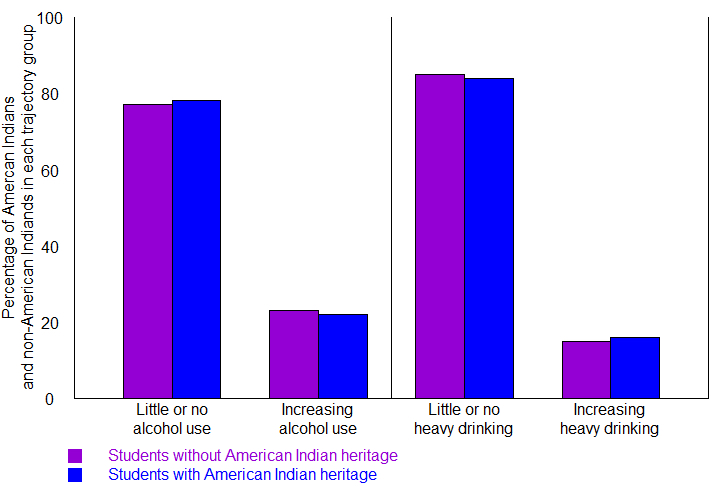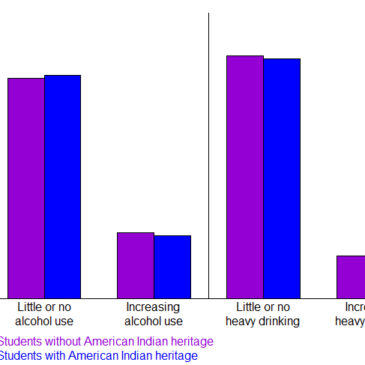The Cherokee Nation, located in northeastern Oklahoma, is not a reservation but is instead a federally-recognized, sovereign territory. Because it is a rural, multi-ethnic area, it provides a setting to study how both ethnicity (i.e., white versus American Indian) and environmental factors contribute to the development of substance use disorders. This week, as a part of our Special Series on Addiction, Resilience, and Recovery within Tribal Communities, The DRAM reviews a two-year longitudinal study by Sarah Lynne-Landsman and her colleagues, that surveyed high school white versus American Indian students living in Cherokee Nation and tracked their alcohol use over their 9th and 10th grade years.
What is the research question?
Within the Cherokee Nation, are the alcohol use trajectories for American Indian youth different from those of youth who do not have American Indian heritage?
What did the researchers do?
Lynne-Landsman and her colleagues surveyed high school students in four communities within the Cherokee Nation territory. They recruited a cohort of 684 participants, 51% of whom had at least partial American Indian heritage, and surveyed them three times during their 9th grade year and twice more during their 10th grade year. During each of the five assessments, participants reported on past-month frequency of alcohol use and heavy drinking episodes. Lynne-Landsman and her colleagues used growth mixture models to separate the students into different groups based on alcohol use and heavy drinking behavior over time. They then used chi-square tests to test whether membership in these trajectory groups differed by American Indian heritage.
What did they find?
The researchers observed two alcohol use trajectory groups. One group was characterized by little to no alcohol use over the two-year period (77% of the students). The other group reported increasing alcohol use over the two-year period (23% of the students). The researchers also observed two groups based on episodes of heavy alcohol use. One group reported few if any episodes of heavy drinking (84% of the students). The remaining 16% reported increasing frequency of heavy drinking over the course of the two years.
There was no association between ethnic background (American Indian versus non- American Indian) and trajectory group. Within this rural area, youth with and without American Indian heritage appear equally likely to belong to the increasing alcohol use trajectories.

Figure. Percentage of participants with and without American Indian heritage who were in each trajectory group. Adapted from Lynne-Landsman et al. (2016). Click image to enlarge.
Why do these findings matter?
Previous research has shown that American Indian people living on reservations are at high risk for substance use disorders. It is interesting, and perhaps encouraging, that in this study ethnicity was not a significant predictor of trajectory group. This suggests that we need to pay more attention to environmental factors, in addition to ethnicity, in the study of substance use. We also need to study protective factors within a given environment. American Indian communities who do struggle with substance misuse among their adolescents have much strength to draw upon. For example, facilities such as the Healing Lodge of the Seven Nations in Washington and the Friendship House in California incorporate notions of tribal pride, activities, and traditions into their treatment programs. In these cases, the intention is for ethnic identity to give treatment seekers and those supporting them extra leverage in overcoming addiction and leading healthier, more productive lives.
Every study has limitations. What about this one?
The participants all came from the Cherokee Nation. A similar study conducted within a different community might yield different findings. The study also only examined the first two years of high school. Studies that examine trajectories throughout high school and beyond often find more than two trajectories of alcohol use and heavy drinking.
For more information:
The National Institute on Alcohol Abuse and Alcoholism has a Fact Sheet on Underage Drinking.
The Substance Abuse and Mental Health Services Administration has a website with reports on substance abuse in Native American and Alaskan Native populations.
— Matthew Tom
What do you think? Please use the comment link below to provide feedback on this article.




